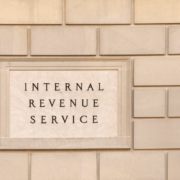COLAs Are Out for 2021’s Popular Fringe Benefits
- Learn about COLAs for tax-related limits for some of the most popular fringe benefits.
- Find out how the new COLAs affect FSAs, QSEHRAs, and MSAs.
- Learn how the new COLAs affect adoption assistance programs and Dependent Care Assistance Programs (DCAPs).
The IRS recently released 2021 cost-of-living adjustments (COLAs) for a wide variety of tax-related limits. These include limits related to many popular fringe benefits. Fiducial has some highlights you’ll want to know about!
Health Flexible Spending Accounts (FSAs)
For 2021, the dollar limit on employee salary reduction contributions to health FSAs will remain at $2,750.
Qualified transportation fringe benefits
The monthly limit on the amount that you may exclude from an employee’s income for qualified parking benefits will remain at $270. The combined monthly limit for transit passes and vanpooling expenses will also remain at $270.
Qualified Small Employer Health Reimbursement Arrangements (QSEHRAs)
The maximum amount of payments and reimbursements under a QSEHRA will be $5,300 for self-only coverage and $10,700 for family coverage (up from $5,250 and $10,600, respectively, for 2020).

Adoption assistance exclusion and adoption credit
The maximum amount that may be excluded from an employee’s gross income under an employer-provided adoption assistance program for the adoption of a child will increase to $14,440 (up from $14,300). In addition, the maximum adoption credit allowed to an individual for the adoption of a child will be $14,440 (up from $14,300).
Both the exclusion and credit will begin to phase out for individuals with modified adjusted gross incomes greater than $216,660. It will entirely phase out for individuals with modified adjusted gross incomes of $256,660 or more.
Dependent Care Assistance Programs (DCAPs)
While the $5,000/$2,500 DCAP limit remains unchanged (it’s non-indexed for inflation), there are adjustments to some of the general tax limits that are relevant to the federal income tax savings under a DCAP. These include the 2021 tax rate tables, earned income credit amounts, and standard deduction amounts. The child tax credit limits are also relevant when calculating the federal income tax savings from claiming the dependent care tax credit versus participating in a DCAP.
Archer Medical Savings Accounts (MSAs)
For existing Archer MSA-compatible high-deductible health coverage, the annual deductible for self-only coverage must not be less than $2,400 (up from $2,350) or more than $3,600 (up from $3,550). The 2021 out-of-pocket maximum will be $4,800 (up from $4,650). For family coverage, the annual deductible must not be less than $4,800 (up from $4,750) or more than $7,150 (up from $7,100). The 2021 out-of-pocket maximum will be $8,750 (up from $8,650).
Note that the Archer MSA pilot program expired at the end of 2007, and you may not establish any new Archer MSAs after that date. Many employers that previously offered Archer MSAs have switched to Health Savings Accounts, which are generally more favorable.
Now’s a good time to determine whether your organization’s plans automatically apply the latest limits or need to be amended to recognize these changes. Also, be sure to clearly communicate any revisions to employees. Have questions about next year’s COLAs? Call Fiducial at 1-866-FIDUCIAL or make an appointment at one of our office locations.
Ready to book an appointment now? Click here. Know someone who might need our services? We love referrals!
For more small business COVID-19 resources, visit Fiducial’s Coronavirus Update Center to find information on SBA loans, tax updates, the Paycheck Protection Program, paid sick and family leave, and more.









